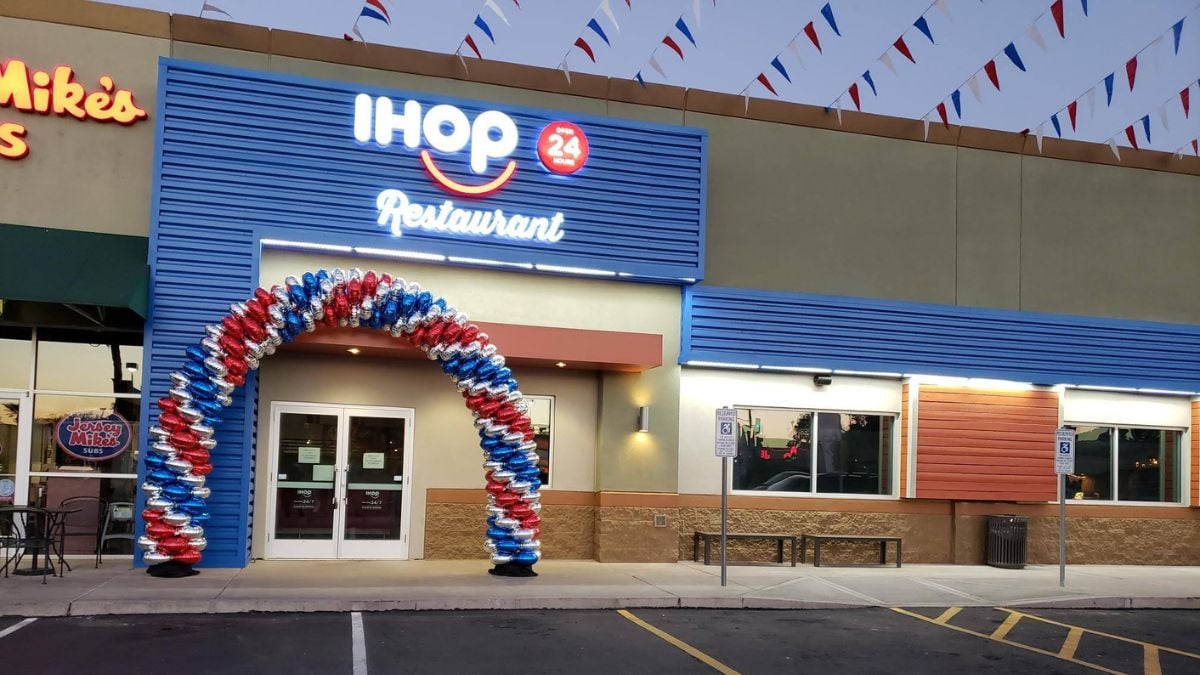
Bad news for pancake lovers! Exton Operating Group Inc., one of the main franchise operators of IHOP, has filed for Chapter 11 of the United States Bankruptcy Code, raising concerns about the future of the popular restaurant chain. Here’s everything we know about the situation.
Why did the IHOP franchisee declare bankruptcy?
In an official statement, Exton Operating Group Inc., based in Pennsylvania, reported that its debts currently exceed $10 million, an amount greater than the total value of its assets. The company is facing serious financial difficulties, attributed to rising debt caused by shifts in consumer habits and the prolonged economic impact of the COVID-19 pandemic.
Will IHOP restaurants be closing?
According to Exton Operating Group Inc., the goal is to reorganize its finances without shutting down any IHOP franchises. Therefore, during the Chapter 11 bankruptcy process, the restaurants will continue operating as usual.
ALSO READ Rite Aid could file for bankruptcy! What will happen to the stores?
“We are committed to continuing to serve with the quality and hospitality that IHOP is known for, while we work on strengthening our operational foundation and protecting the jobs of our team members,” the company said in its statement.
Dine Brands Global Inc., IHOP’s parent company, stated that Exton Operating Group’s bankruptcy does not affect the brand at the national level. It also mentioned that it will support this and other franchisees facing financial hardship in order to ensure the brand’s continued presence across the country.
Although Exton Operating Group has stated that it won’t be closing any locations, several franchise restaurants have already shut down, particularly in New Jersey, where at least three locations have closed:
- Boonton, at 304 Wootton Street
- Bridgewater, at 793 US Highway 202
- Flemington, at 14A Royal Road
History of IHOP
Back in 1958, Al Lapin, tired of eating the “same old food,” created a restaurant where his family and friends could enjoy a delicious meal. That’s how the first IHOP was founded in Toluca Lake, California, and it quickly became a favorite for many.
On September 10, 2019, Ecuador became the first Latin American country where IHOP opened its doors. The grand opening was celebrated in style, with three locations launching simultaneously in Guayaquil, Daule, and Ambato.
Although world-famous for its delicious pancakes, the restaurant’s food offerings are quite broad. They serve appetizers, quesadillas, chicken strips, burgers, pasta, and much more.
ALSO READ Sam’s Club will open 15 new stores in the United States! Check out where
What are IHOP’s hours?
IHOP restaurants are open daily from 7:00 AM to 10:30 PM.
How many IHOP locations are there?
Currently, there are 1,650 IHOP locations in 11 countries around the world: Mexico, the United States, Canada, Saudi Arabia, Kuwait, United Arab Emirates, Guatemala, the Philippines, Qatar, Bahrain, and Ecuador.
What is the International Bank of Pancakes?
The International Bank of Pancakes is IHOP’s rewards program. Loyal members can earn PanCoins and redeem them for promotional coupons for meals, products, or experiences through the app. For every $5 you spend, you’ll earn 1 PanCoin in your International Bank of Pancakes account.
You can earn PanCoins by dining in or ordering directly through the app or website. Orders placed through DoorDash or other delivery providers do not earn PanCoins.
PanCoins can be redeemed for promotional coupons for pancakes and other menu items. You can also accumulate PanCoins and trade them for coupons for other items on Stack Market, available in the app. Only one reward is available per customer per day. You can redeem your PanCoins in three simple steps:
- Open the app or log in to your account.
- Select a reward in Stack Market, which will place a one-time-use coupon in your Rewards Wallet.
- Show this code to your server or enter it online at checkout.
What is Chapter 11 of the U.S. Bankruptcy Code?
Filing for bankruptcy protection under Chapter 11 means that a company is on the brink of ceasing operations, but believes it can recover its success if given the opportunity to reorganize its assets, debts, and business operations.
By filing under Chapter 11, the company seeks protection from creditors while restructuring its business and debt. This type of protection is available to corporations, individual entrepreneurs, and partnerships. Under Chapter 11, the company’s management continues to oversee daily operations. However, major business decisions must be approved by the bankruptcy court.









